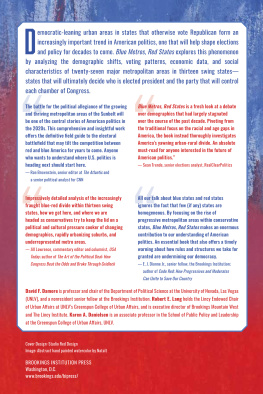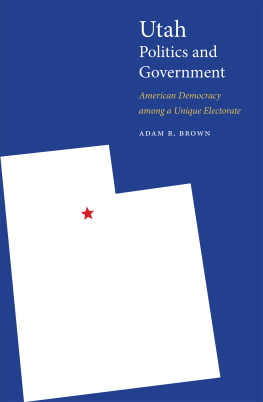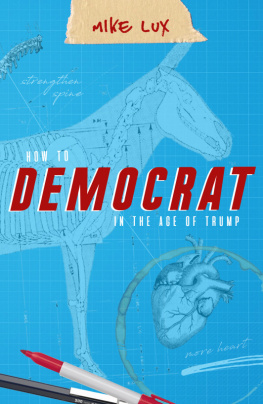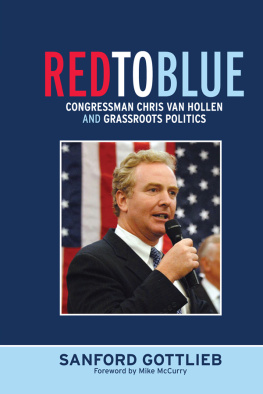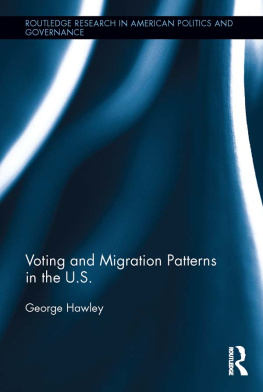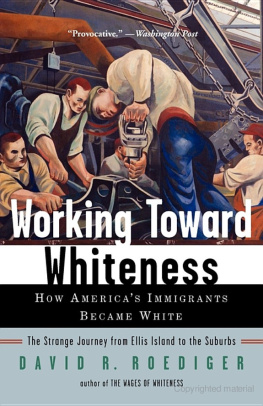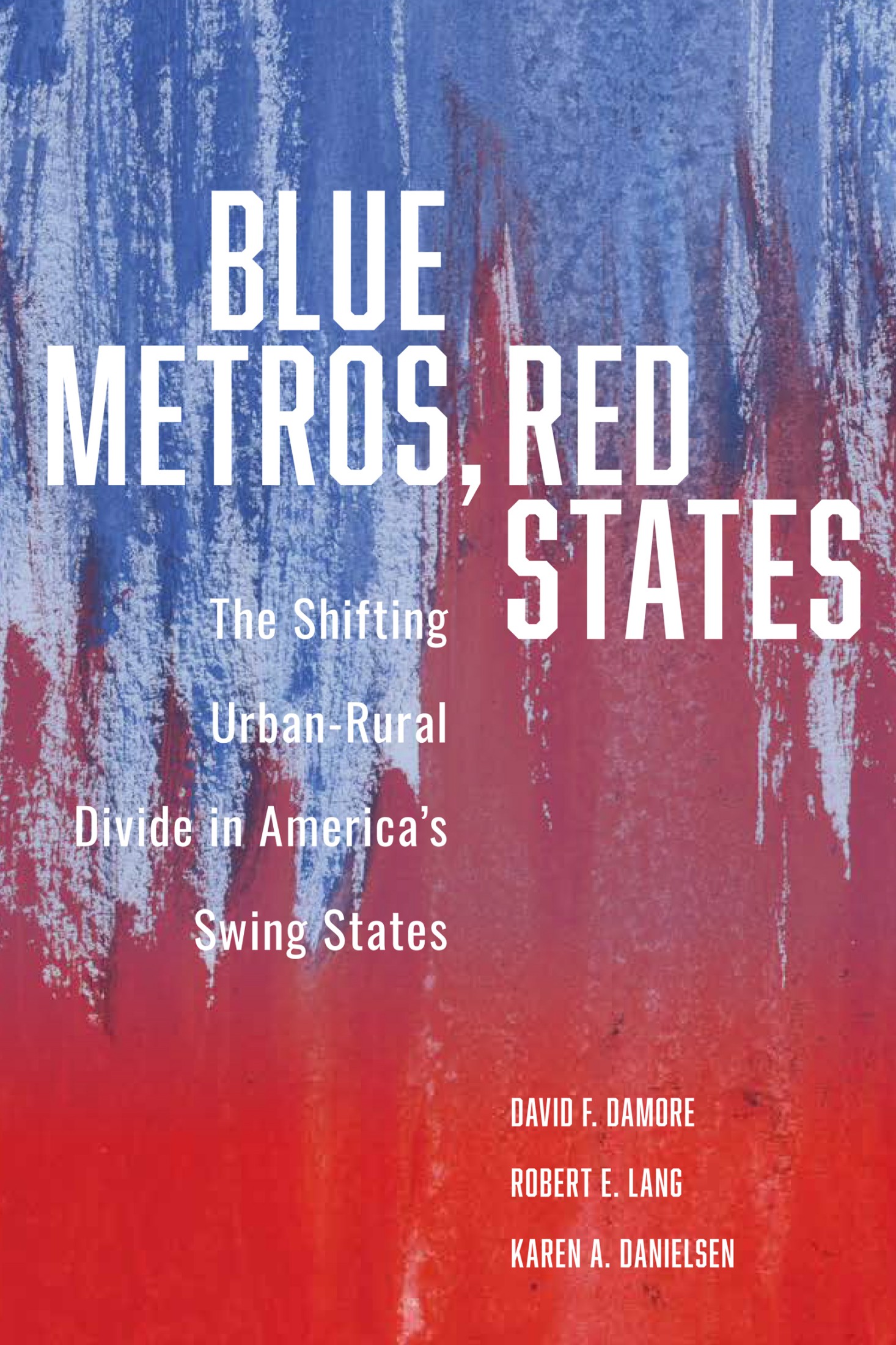THE SHIFTING URBAN-RURAL DIVIDE
Blue Metros, Red States
IN AMERICAS
SWING STATES
David F. Damore
Robert E. Lang
Karen A. Danielsen
WITH CONTRIBUTIONS FROM
William E. Brown Jr.
John J. Hudak
Molly E. Reynolds
BROOKINGS INSTITUTION PRESS
Washington, D.C.
Copyright 2021
THE BROOKINGS INSTITUTION
1775 Massachusetts Avenue, N.W.
Washington, D.C. 20036
www.brookings.edu
All rights reserved. No part of this publication may be reproduced or transmitted in any form or by any means without permission in writing from the Brookings Institution Press.
The Brookings Institution is a private nonprofit organization devoted to research, education, and publication on important issues of domestic and foreign policy. Its principal purpose is to bring the highest quality independent research and analysis to bear on current and emerging policy problems. Interpretations or conclusions in Brookings publications should be understood to be solely those of the authors.
Library of Congress Control Number: 2020943121
ISBN 9780815738473 (pbk)
ISBN 9780815738480 (ebook)
9 8 7 6 5 4 3 2 1
Typeset in Kepler
Composition by Elliott Beard
Contents
Ruy Teixeira
Robert E. Lang
David F. Damore
Robert E. Lang
Karen A. Danielsen
David F. Damore
Karen A. Danielsen
Robert E. Lang
Robert E. Lang
Karen A. Danielsen
John J. Hudak
Karen A. Danielsen
William E. Brown Jr.
David F. Damore
Robert E. Lang
David F. Damore
Robert E. Lang
David F. Damore
Robert E. Lang
Karen A. Danielsen
Molly E. Reynolds
Foreword
Ruy Teixeira
The 2020 election is shaping up to be hugely consequential, with a wide range of states in play between the two parties. I will be keeping a copy of Blue Metros, Red States: The Shifting Urban-Rural Divide in Americas Swing States close at hand as I follow all of the action and try to make sense of itboth in terms of gaming out the election itself and thinking about what the results might tell us about Americas political future.
This is because David F. Damore, Robert E. Lang, and Karen A. Danielsen, the principal authors of the volume, with additional contributions from William E. Brown Jr., John J. Hudak, and Molly E. Reynolds, provide a depth and quality of information about the thirteen swing states they cover that you literally cannot find anywhere else.
Let me enumerate some of the books unique qualities. First, the theme of the volumethat swing states overall political trends cannot be understood without considering the interplay between large (million-plus) blue and blue-trending metros and the less dense, redder parts of these statesis spot on. You cannot understand Arizona without understanding the Tucson and, particularly, the Phoenix metros; Colorado without Denver; North Carolina without Charlotte and Raleigh; Georgia without Atlanta; and so on. The push and pull between these metros and the outlying parts of their states is the big political story in election after election.
But the analysis of individual states in this volume further embeds the story of the million-plus metros into a regional analysis of every state (with regions clearly delineated on maps). Each region has a distinct political identity and those identities help unpack political trends in a given state. Speaking as someone who has conducted some regional analyses of swing states, I find the authors regional designations uniformly plausible and helpful.
The coverage of individual states also benefits from a uniform set of tables for every state. One table compares the demographics of the state as a whole with the demographics of the million-plus metros within the state. This allows you to see not only how nonwhites might be concentrated in the large metros, but also how much diversity within diversitya key theme of the volumethere is among the nonwhite population, which turns out to have significant political implications. Another table shows the results of statewide elections 20122018, again comparing the state as a whole to the million-plus metros, and another presents the party affiliation of the states governor and the partisan composition of the states legislative bodies and Senate and House representation. These at-a-glance tables are enormously helpful and by themselves are worth the price of admission as reference material.
Governance structures are not neglected either. Both the relative fragmentation and local autonomy of decisionmaking within million-plus metros is examined, as well as the extent to which large metros are typically disadvantaged in state politics and policymaking. The latter dynamic explains a great deal of currently salient political conflict within these states.
Finally, the write-up for each state includes a deep dive into the states cultural and demographic evolution via interviews with an expert or experts on that state. This provides another lens of a states recent political trends, situating each in a rich historical context.
The chapter authors also synthesize all of the information about a given state, provide what they term the state of play for the state, and suggest some possible outcomes going forward. I find these assessments judicious and insightful, based both on the data the authors provide and previous analyses I have conducted of these states politics. It will be interesting to see the outcomes of the coming election and how they may have been foreshadowed by the analyses in this book. I will not be surprised if many of them are quite prescient.
As this sketch makes clear, the coverage of each state in this volume constitutes a mini-handbook about the state and its politics. I cannot think of a better, more accessible way to anchor ones understanding of the political situation within a swing state of interest than to consult the appropriate chapter in this book. Its that good.
Preface
THE ORIGINS OF BLUE METROS, RED STATES
Robert E. Lang
The blue metros, red states concept originated in discussions at a meeting of Sun Belt center directors organized by the Kinder Institute at Rice University in Houston, Texas, in June 2017. William Fulton, Kinder Institutes director, organized the meeting so the directors of academic public policy centers located in metropolitan areas within Sun Belt states could share their experiences and review recent projects. The intent was to see if these centers could combine resources and perhaps work on regional-to-national-level research projects. Sun Belt states represented included Arizona, California, Colorado, Florida, Georgia, Nevada, North Carolina, and Texas, among others. Big metros represented at the meeting included Atlanta, Austin, Charlotte, Denver, Houston, Las Vegas, Miami, Phoenix, and San Diego.
Part of the Rice discussion included a concern for how the largest metropolitan regions in mostly swing Sun Belt states interacted with their often more conservative state governments. This meeting took place a year after the North Carolina legislature passed the bathroom bill mandating that people use a facility consistent with the gender identified on their birth certificate. The legislation preempted an ordinance passed by the city of Charlotte (see ) allowing people to use the facilities matching their current gender identity. The idea that a state legislature could dictate to a major city such as Charlotte where its residents could go to the bathroom proved a provocative and vivid example of the split in blue metros and red states politics.

